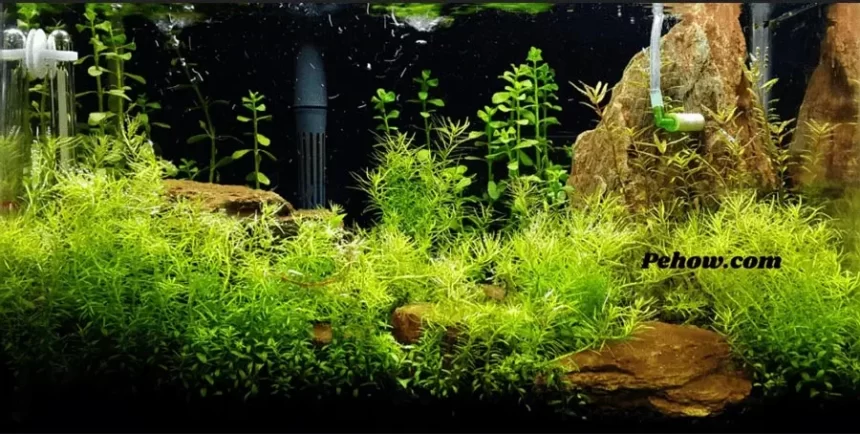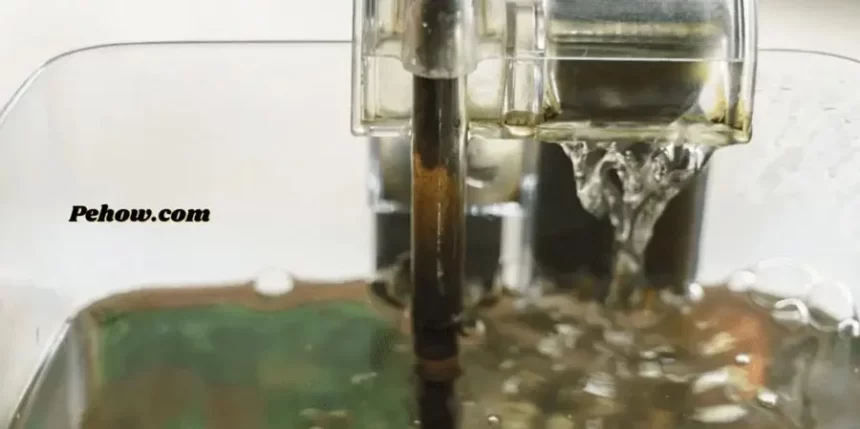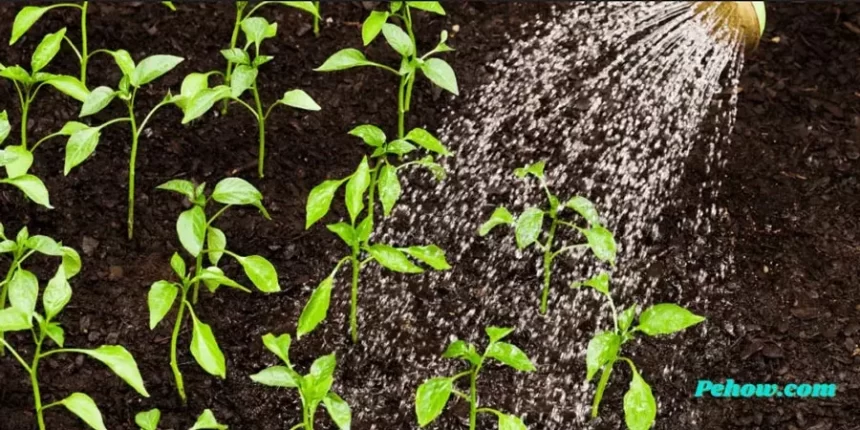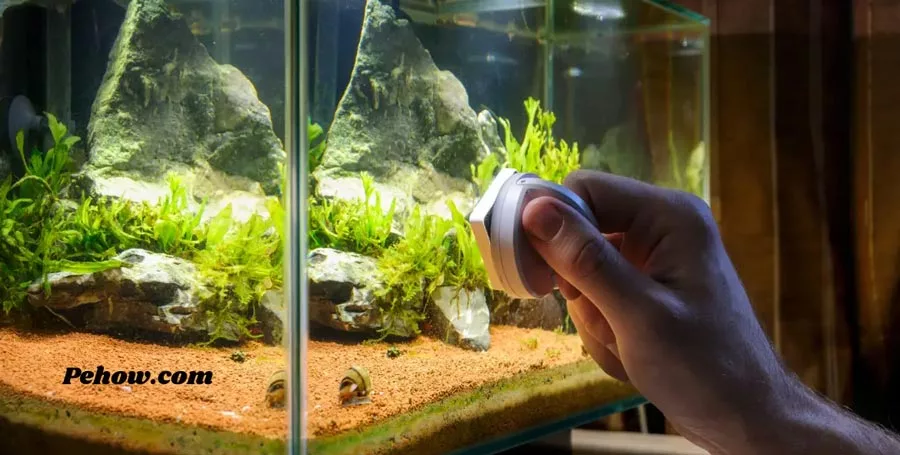I don’t change the water in my fish tank because of my busy schedule. Today I decided to change the water in the tank and I don’t want to throw away the old water. But can I use fish tank water for plants?
I have searched in many forums and google but no one can give me the correct answer whether I can water my plants in a fish tank? Then I called my friend who is an expert in this field.
Yes, you can use fish tank water for plants. In fact, it is really good for them. Fish waste contains nutrients that plants can use, such as nitrogen and phosphorus. These nutrients can help to promote growth in your plants.
However, there are some risks that you need to be aware of. The water from your fish tank may contain harmful chemicals, such as ammonia, which can be toxic to plants. It is important to test the water before using it on your plants.
Keep reading to learn more about using fish tank water for plants, including how to test the water and what to do if it contains harmful chemicals.
What is fish tank water and can I use it for my plants
Fish tank water is simply water that has been used to house fish. It can be tap water that has been treated with a water conditioner to remove chlorine and other chemicals, or it can be bottled spring water or distilled water. As long as the water is clean and free of harmful chemicals, it can be used for plants.
Some fishkeepers choose to use fish tank water for their plants because it is already rich in nutrients from fish waste. However, if the water is not properly filtered, it can also contain harmful bacteria and toxins that can be detrimental to plant health. It is important to consult with a professional before using fish tank water for plants to ensure that it is safe and will not cause any harm.
How to test the water before using it on your plants

Testing the water before using it on your plants is important, as you want to be sure that the water is safe for them. If left unchecked, your plant can develop a variety of problems and may eventually die. Luckily, testing the water is easy to do and only takes a few minutes. To test the water you follow the steps below:
Check the pH levels of the water
There are a few ways that you can check the pH levels of your water. One way is to use a pH kit, which can be purchased at most gardening stores. Another way is to use pH strips, which can also be purchased at most gardening stores.
If you’re using a pH kit, follow the instructions that come with it. If you’re using pH strips, simply dip the strip into the water and compare the color of the strip to the color chart that comes with it.
The ideal pH level for plants is between 6 and 7. If the pH level is too low, it can make the plants more susceptible to disease. If the pH level is too high, it can prevent the plants from getting the nutrients that they need.
Check for chlorine
Chlorine is often added to water to kill bacteria. However, it can also be harmful to plants. To test for chlorine, simply fill a glass with water and let it sit for 24 hours. If there is chlorine in the water, it will evaporate and you will be able to see it as a blue gas.
If there is chlorine in the water, you can remove it by boiling the water for 30 minutes or by using a water filter.
Check for nitrates
Nitrates can be found in both fresh and salt water. They are usually harmless to humans but can be toxic to plants. To test for nitrates, you can purchase a nitrate kit at most gardening stores.
Follow the instructions that come with the kit to test the water. The ideal level of nitrates for plants is between 0 and 10 ppm (parts per million). Anything above this level can be toxic to plants.
Check for dissolved solids
Dissolved solids can come from a variety of sources, including minerals in the water, runoff from fertilizers, and even pollution. too much dissolved solids can make it difficult for plants to absorb water and can also lead to mineral buildup on the leaves.
To test for dissolved solids, you can purchase a TDS (total dissolved solids) meter at most gardening stores. Simply follow the instructions that come with the meter to test the water.
The ideal level of dissolved solids for plants is between 0 and 500 ppm. Anything above this level can be harmful to plants.
Once you’ve tested the water, you can adjust it as needed to create a safe and healthy environment for your plants.
What to Do if the Water Contains Harmful Chemicals

If you are using water from a fish tank to water your plants, it is important to make sure that the water does not contain any harmful chemicals. If you are unsure whether or not the water is safe, you can test it by doing a simple test.
Place a small amount of the water on a white piece of paper and wait for it to dry. If the paper turns pink or red, then the water contains harmful chemicals and you should not use it on your plants.
If you find that the water does contain harmful chemicals, there are a few things you can do to make it safe for your plants. One option is to let the water sit for 24 hours so that the chemicals can evaporate.
Another option is to add a water filtration system to your fish tank so that the water is filtered before you use it on your plants. By taking these precautions, you can ensure that your plants stay healthy and thrive.
How to Properly Dispose of Fish Tank Water
When it’s time to clean your fish tank, the water you use to rinse it can be put to good use. You can use this fish tank water on your plants. Just be sure to use a watering can or hose to water the plants directly and not pour the water over the leaves.
This will prevent any potential diseases from spreading. Be sure to dispose of the fish waste properly, too; it can be used as fertilizer for your plants.
How to Use Fish Tank Water for Plants

The water in a fish tank can be used to water plants. This is because the water in a fish tank is already balanced and has all of the necessary nutrients for plants. To use the fish tank water, simply pour it into a watering can and water your plants as you normally would. You can also use a siphon to remove the water from the fish tank and into a container that can be used to water plants.
Instead of using the fish tank water all at once, you can add small amounts every day to water your plants. This will help to keep the plants healthy and also prevent any drastic changes in the fish tank water from affecting the plants.
When using fish tank water to water plants, it is important to remember that the water will likely contain chlorine. This can be harmful to plants, so it is important to remove the chlorine before using the water.
The Risks of Using Fish Tank Water for Plants
When it comes to gardening, many people are looking for ways to cut costs and maximize efficiency. One way people have started doing this is by using fish tank water for plants. While this can be an effective way to water plants, there are some risks associated with doing so.
One of the biggest risks is that fish tank water can contain harmful chemicals. If these chemicals are not removed before watering plants, they can potentially damage the plants.
Additionally, fish tank water can also contain bacteria and other microorganisms that can be harmful to plants. As such, it’s important to take proper precautions when using fish tank water for plants.
Another risk to consider is that fish tank water can be high in nutrients. While this can be beneficial for some plants, it can also cause problems for others. For example, too much nitrogen can lead to leaf burn or other damage. As such, it’s important to research the best way to use fish tank water for your particular plants.
Overall, there are some risks associated with using fish tank water for plants. However, if you take proper precautions and do your research, it can be an effective way to water your plants.
The Summary
In conclusion, the water in a fish tank can be used to water plants. However, there are some risks associated with doing so. It’s important to take proper precautions and do your research to ensure that using fish tank water for plants is right for you.
I hope this article has helped your answer the question “Can I use fish tank water for plants?” If you have any further questions, please feel free to leave a comment below. Thanks for reading!



